




How to Identify Even and Odd Numbers Quickly
A number can be considered even or odd. Even numbers are numbers ending in 0, 2, 4, 6, or 8, and odd numbers ending in 1, 3, 5, 7, or 9.
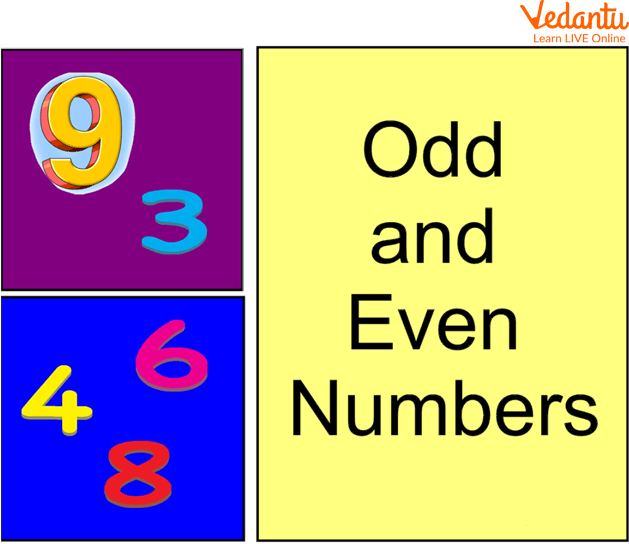
The Even and Odd Numbers
What are Odd and Even Numbers?
If you've ever had this question or if you don't understand what it means, you need to know that a number can be classified as even or odd. Even numbers are those divisible by 2. That is if we divide a number by 2 and the remainder of the division is zero, it is an even number. A number is considered odd if it is not divisible by 2, that is if we divide that number by 2 and it leaves a remainder equal to 1. In the article, below see the even and odd numbers charts.
Properties of Even and Odd Numbers
An integer can be either even or odd.
Even numbers are divisible by 2.
Odd numbers are not divisible by 2.
The unit of even numbers is equal to 0, 2, 4, 6, or 8.
The unit of odd numbers is equal to 1, 3, 5, 7, or 9.
Two even integers added together result in an even number.
Two odd integers are added together to make an even number.
An even number is produced when two even integers are multiplied.
Two odd integers multiplied together result in another odd number.
Even Number
A number is classified as even if it is divisible by 2, that is if we can divide it into two equal parts.
For example, if there are 6 marbles, it is possible to divide them between two people so that none are left, leaving 3 marbles for one person and 3 for the other. So 6 is an even number.
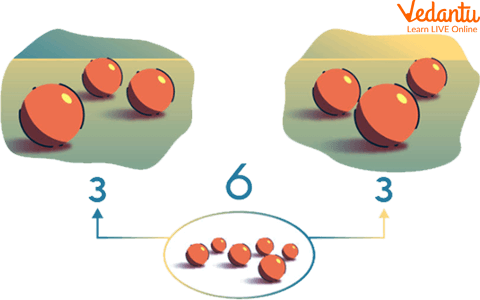
The Even Numbers Example
In general, an even number is one whose unit is equal to 0, 2, 4, 6, or 8. Watch:
The number 534 is even, as its unit is 4.
The number 1023 is not even, as its unit is 3.
Even Numbers Less than 100
See below for all even numbers less than 100.
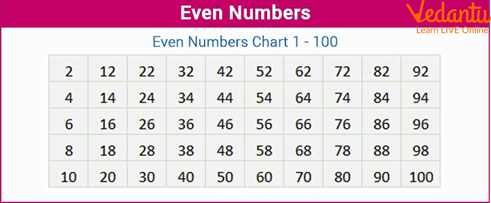
Even Numbers Less than 100
Odd Number
A number is classified as odd if it is not divisible by 2. That is, by dividing this number by 2, we will find a remainder equal to 1.
For example, if we are going to divide 11 marbles between 2 people, we will give 5 marbles to each one and there will be 1 marble left.
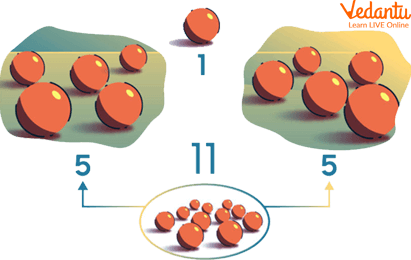
Example of Odd Numbers
In general, an odd number is one whose unit is equal to 1, 3, 5, 7, or 9. Watch:
The number 245 is odd, as its unit is 5.
The number 2024 is not odd, as its unit is 4.
Odd Numbers Less than 100
See below for all odd numbers less than 100.
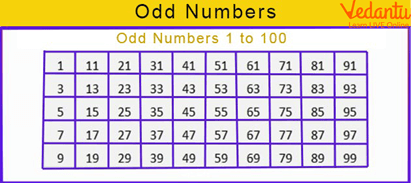
The Odd Numbers Less than 100
Solved Examples
Q1. The sum of four odd numbers is equal to:
Ans: When we add the odd numbers two by two, we find two numbers that are even. When we add these two even numbers together, we will find an even number. Therefore, the sum of four odd numbers is equal to an even number, as the sum of two odd numbers is an even number and the sum of two even numbers is an even number.
Q2. Matheus lives in the third apartment on the 26th floor of a building. To speak with Matheus, the doorman calls number 2603, which is Matheus' apartment. Analysing this number, is it even or odd?
Ans: Number 2603 is an odd number. To know if it is odd, just look at the unit place of this number, which is equal to 3. Numbers ending in 3 are always odd.
Practice on Your Own
Q1. What is the Smallest Positive Even Number and an Odd Number?
Ans: Smallest positive numbers that are even and odd are 2 and 1, respectively.
Q2. Write all the even numbers from 1 – 50.
Ans: 2, 4, 6, 8, 10, 12, 14, 16, 18, 20, 22, 24, 26, 28, 30, 32, 34, 36, 38, 40, 42, 44, 46, 48, 50.
Tips on Even and Odd Numbers that help Students to learn
While counting the numbers, the alternating number starting from one will always be odd while the alternating number starting from 2 will always be an even number.
One of the easy ways to find out regarding the even and off is by checking whether it is divisible by 2 or not.
Non-integer numbers will neither be odd nor even which includes decimals, fraction numbers, and even infinity.
The set of odd and even numbers can be determined by taking a look at the one's place and the number present there as well.
Every odd number will consist of the letter “e” in it.
Summary
The article describes what is odd and even numbers. Even numbers are those that have the number two as a multiple, or what is the same, that have a perfect half. If we take an even number and divide it in half, it will give us two equal parts. This means that all even numbers have two equal halves.
On the other hand, odd numbers are those that do not have equal halves, that is, if they are divided by two, one part will be greater than the other, or they will have decimals to their credit.
FAQs on Even and Odd Numbers Explained: Definitions, Shortcuts & Examples
1. Why is it important for children to learn about even and odd numbers right from their childhood?
Children tend to grasp concepts quickly at an early stage and hence helping them to understand a lot of concepts. This also allows them to apply the concepts once learned at an early stage. Hence children need to learn concepts that are related to even and odd numbers right from their childhood. They are not only supposed to learn but they must also be trained properly to get accustomed to the usage of these numbers in their daily life.
2. What are the differences seen between even and odd numbers?
Some differences are observed between the even and odd numbers and can be listed as follows:
Even numbers are those numbers that are readily divided by the number 2. While those numbers that cannot be easily divided by 2 will be termed as odd numbers.
Those numbers that contain the last digit as an even number will also be said as even numbers while those numbers that contain the last digit as an odd number will be completely termed as an odd number.
Even numbers can be grouped into pairs of two while the odd numbers cannot be grouped into pairs of two.
3. How can even and odd numbers be differentiated by a grouping method?
By using the concept of even and odd numbers it is possible to check whether the number is even or odd with the grouping method. This method can be done in two ways and can be provided as follows:
In two equal groups: If a number has been divided into two groups with two elements in each of them then the number will be said to be an even number. However, in the case of odd numbers, there will always be a reminder of one while the grouping is done.
In groups of two each: For a number, there will be multiple groups of “two” that can be formed without getting any remainder in the case of an even number. However, if the number is odd there will be a remainder that does not pair.
4. What are some of the ways that help make children learn more about even and odd numbers?
There can be several ways in which children can be made to understand even and odd numbers. This can be provided as follows:
Select several children and line them up in pairs to check if there are even or odd numbers of children.
Explain the concept in the form of a song and sing it
With the help of a calendar mark the days when they review the topics.
The use of some fun even and odd worksheets will help children solve the questions while also having some fun.
5. Are any worksheets available on Vedantu that will help students learn more about even and odd numbers?
Multiple worksheets are available on Vedantu which not only makes learning fun but will also help students understand the concepts in a much simpler manner. Students can also check out the other resources that are freely available on Vedantu such as Vedantu NCERT solutions for Maths that help them to both understand while also checking some sample questions that help practice the concepts well. Even and odd numbers are a type of concept that needs more practice and hence practicing the topic well will only help the students to understand them.
6. Can a decimal or a fraction be even or odd?
No, odd and even numbers can only be applied to integers. Fractions and decimals cannot be categorised as either even or odd.
Therefore, we cannot conclude that any decimal, such as 5.47, is odd just by looking at its last digit, which is 7. Furthermore, the last digit of 23.04 is 4 therefore, it is even.
7. How to check if a given number is even or odd without dividing it by 2?
Without dividing a number by 2, it is possible to determine if it is even or odd by simply looking at the unit's place in the given number. The provided number is an even number if the unit's place includes the numbers 0, 2, 4, 6, or 8. If the provided number's unit place contains the digits 1, 3, 5, 7, or 9, however, the given number is this odd.























